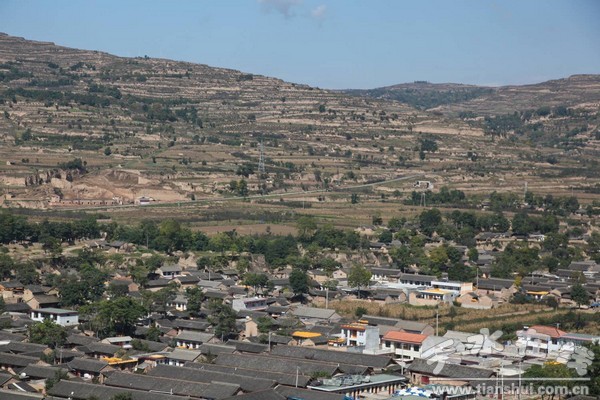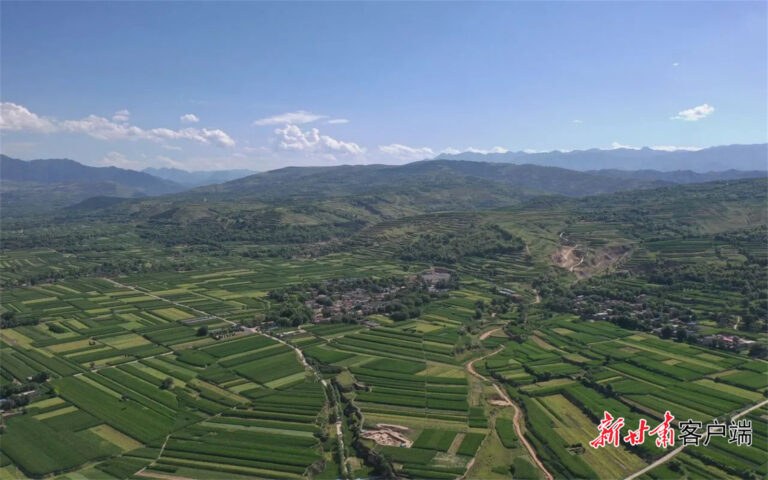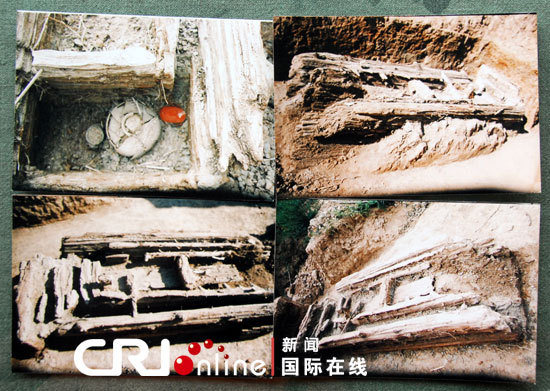A Comprehensive Guide to Pingliang Jingning Wenmiao: Temples, Traditions, and Treasures
An Essential Guide to Visiting Pingliang Jingning Wenmiao
In This Guide
- An Essential Guide to Visiting Pingliang Jingning Wenmiao
- The Rich History of Pingliang Jingning Wenmiao
- Main Highlights: What to See at Pingliang Jingning Wenmiao
- Planning Your Visit: A Practical Guide
- Tickets, Hours, and Booking
- How to Get There
- Local Cuisine and Accommodation
- Frequently Asked Questions
- Final Thoughts on Your Trip
Nestled within the vibrant grounds of Jingning No. 1 Middle School in Pingliang, the Pingliang Jingning Wenmiao, or Jingning Confucian Temple, stands as a remarkable testament to China’s rich cultural heritage. Established during the Ming Dynasty in 1543, this architectural gem spans over 12,500 square meters, showcasing the grandeur of traditional Chinese design with its symmetrical layout and elegant structures. The temple complex is oriented southward, anchored by the majestic Dacheng Hall, with flanking buildings that add to its impressive stature.
As a vital center for Confucian scholarship, the Jingning Wenmiao honors the teachings of Confucius, one of history’s most influential philosophers and educators. His legacy, which shaped the moral and educational framework of Chinese society, resonates throughout the temple, making it a revered site for both scholars and tourists alike. Recognized as a Provincial Cultural Relic Protection Unit in 1993 and later included in the national list of key cultural heritage sites in 2019, the temple is not just a monument; it’s a living symbol of the enduring values of wisdom, respect, and education that Confucius espoused.
Visitors to Pingliang Jingning Wenmiao are invited to wander through its splendid courtyards, admire the intricate craftsmanship of its structures, and reflect on the profound philosophical teachings that have influenced generations. Whether you’re a history enthusiast, a culture seeker, or simply a curious traveler, this temple offers an enriching experience that connects you to the heart of Chinese civilization.
The Rich History of Pingliang Jingning Wenmiao
The Pingliang Jingning Wenmiao, located within the campus of Jingning No. 1 Middle School in Gansu Province, is a significant historical site that dates back to the Ming Dynasty. Its construction began in the 21st year of the Jiajing era (1543). Originally, the complex covered an impressive area of 18,076 square meters, showcasing the architectural grandeur of its time.
The Wenmiao is dedicated to Confucius, the renowned philosopher and educator whose teachings have profoundly influenced Chinese culture and society. The layout of the Wenmiao is characterized by a north-south axis, with the central structure being the Dacheng Hall, flanked by the Lixing Gate and the entrance to the Confucius Temple. This arrangement highlights a symmetrical design that reflects the traditional Chinese architectural principles, emphasizing balance and harmony.
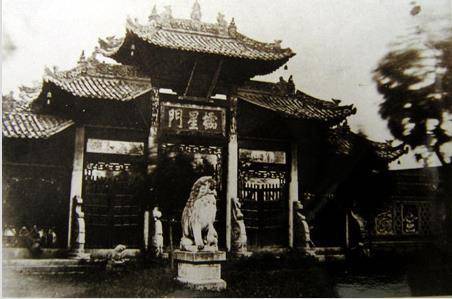
Pingliang Jingning Wenmiao.
Over the centuries, the Wenmiao has undergone various renovations and expansions, solidifying its place as a representative example of Ming Dynasty architecture. In March 1993, it was designated a provincial cultural relic protection unit by the Gansu provincial government, recognizing its historical and cultural significance. More recently, on October 7, 2019, it was included in the eighth batch of national key cultural relic protection units, further cementing its importance in the preservation of Chinese cultural heritage.
Visitors to the Wenmiao are not only treated to a glimpse of its architectural beauty but can also appreciate its cultural significance as a center of Confucian learning. The temple complex serves as a reminder of the enduring legacy of Confucius, whose teachings continue to resonate within Chinese society and beyond. As a site of worship and education, the Pingliang Jingning Wenmiao stands as a testament to the historical reverence for Confucian ideals and the pursuit of knowledge that has shaped the moral and ethical fabric of Chinese culture for centuries.
Main Highlights: What to See at Pingliang Jingning Wenmiao
Nestled within the serene campus of Jingning No. 1 Middle School in Pingliang, Gansu Province, the Jingning Wenmiao, or Confucius Temple, is a remarkable testament to the architectural and cultural heritage of the Ming Dynasty. Established in 1543 during the Jiajing reign, this temple complex spans approximately 12,568 square meters, showcasing a sophisticated layout characterized by symmetry and grandeur.
The main axis of the temple runs north to south, anchored by the majestic Dacheng Hall, the central hall dedicated to Confucius, flanked by the imposing Lingshan Gate and Dacheng Gate. The architectural design is meticulously planned, with side chambers that enhance its grandeur, while the entire compound reflects the principles of Confucian philosophy and education.
Jingning Wenmiao became a designated provincial-level cultural heritage site in 1993 and was further recognized as a national key cultural relic protection unit in 2019, underscoring its historical significance. As a place of worship and learning, it serves as a tribute to Confucius (551–479 BC), the venerated philosopher and educator whose teachings have profoundly influenced Chinese culture and education.

Pingliang Jingning Wenmiao.
Visitors to the temple can admire its unique architectural features, including intricately carved beams and vibrant murals that narrate stories of Confucian teachings. The tranquil surroundings of the temple compound provide a peaceful respite from the bustling world outside, inviting contemplation and reflection.
In addition to its historical and cultural importance, Jingning Wenmiao is situated in a region rich with other attractions, making it an ideal stop for travelers exploring the broader cultural landscape of Gansu Province. Nearby sites, such as the ancient city ruins and various historical monuments, complement the visit, offering a deeper insight into the rich tapestry of Chinese history.
Whether you are a history enthusiast, a lover of architecture, or simply seeking a moment of tranquility, Jingning Wenmiao promises to be a captivating destination that highlights the enduring legacy of Confucianism in Chinese society.

Pingliang Jingning Wenmiao.
Planning Your Visit: A Practical Guide
Visiting Pingliang Jingning Wenmiao: A Practical Guide
Pingliang Jingning Wenmiao, also known as the Jingning Confucian Temple, is a stunning historical site nestled within the campus of Jingning No. 1 High School in Pingliang, Gansu Province. This temple, which dates back to the Ming Dynasty, is a testament to Chinese architectural grandeur and the cultural significance of Confucianism. Below is essential information for your visit to ensure a smooth and enriching experience.
Getting There
The Jingning Confucian Temple is located in the heart of Pingliang City. The closest major city is Lanzhou, which is approximately 200 kilometers away. You can reach Pingliang by train or bus from Lanzhou. Once in Pingliang, local taxis and public buses can take you to the temple.
Address: Jingning No. 1 High School Campus, Jingning County, Pingliang City, Gansu Province, China.
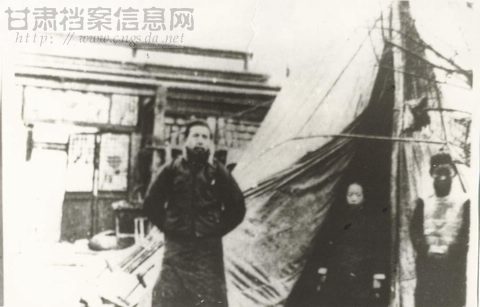
Pingliang Jingning Wenmiao.
Opening Hours
- Daily: 8:00 AM – 6:00 PM
- Note: It is advisable to check for any changes in opening hours during public holidays or special events.
Admission Fee
- Entry: Free
- Donations are appreciated to help with the maintenance and preservation of the temple.
What to See
-
Architectural Highlights: The temple complex covers an area of approximately 20,000 square meters and features a symmetrical layout that includes the Dacheng Hall, the main hall dedicated to Confucius, and various pavilions. The architecture is a stunning representation of Ming Dynasty aesthetics.
-
Cultural Significance: The temple honors Confucius, the revered philosopher and educator whose teachings have greatly influenced Chinese culture and education. Inside, you can find inscriptions and statues that depict his life and teachings.
-
Scenic Surroundings: The temple is set within a tranquil environment, perfect for leisurely walks and reflection. The serene atmosphere, combined with historical architecture, makes it an ideal spot for photography and contemplation.
Nearby Attractions
While visiting the Jingning Confucian Temple, consider exploring other cultural sites in Pingliang:
– Xianrenxia (仙人峡): A scenic gorge offering hiking trails and beautiful landscapes.
– Dongjiao Mountain (东交山): A nearby mountain known for its natural beauty and hiking opportunities.
– Pingliang Museum: Provides insights into the local history and culture, showcasing artifacts and exhibits related to the region.
Tips for Visitors
- Dress Code: As a site of cultural significance, visitors are advised to dress modestly and respectfully.
- Language: Basic Mandarin phrases can be helpful, though many signs are in both Chinese and English.
- Best Time to Visit: The temple can be enjoyed year-round, but spring (April to June) and autumn (September to November) offer pleasant weather for exploring.

Pingliang Jingning Wenmiao.
Accessibility
The temple is accessible for individuals with mobility challenges, but be prepared for some uneven terrain within the grounds. It is advisable to bring assistance if necessary.
Local Cuisine
Don’t miss the opportunity to try local Gansu specialties while in Pingliang. Look for:
– Noodles: Gansu is famous for its hand-pulled noodles, best enjoyed in a local eatery.
– Dumplings: Sample a variety of fillings and styles at nearby restaurants.
Conclusion
A visit to Pingliang Jingning Wenmiao provides not only a glimpse into China’s rich historical tapestry but also an opportunity for personal reflection and appreciation of Confucian values. Plan your trip with this guide to ensure a memorable experience at this remarkable site.

Pingliang Jingning Wenmiao.
Tickets, Hours, and Booking
When planning your visit to Pingliang Jingning Wenmiao (静宁文庙), the ticketing details are straightforward and user-friendly.
Admission to the temple is typically free, allowing visitors to explore the rich cultural and historical significance of this ancient site without any financial barriers. This accessibility makes it an excellent choice for both casual tourists and those with a deeper interest in Confucian philosophy and architecture.
However, it is advisable to check for any temporary exhibitions or special events that may require a ticket. During peak tourist seasons or for guided tours, there might be a nominal fee to enhance your experience and gain deeper insights from knowledgeable guides.

Pingliang Jingning Wenmiao.
For those looking to visit during busy periods, it’s recommended to arrive early to avoid crowds and ensure you have ample time to appreciate the serene atmosphere and stunning architecture of the Wenmiao.
Please note that while entrance fees are generally waived, donations to support the preservation of this historical site are always welcome and encouraged.
How to Get There
Getting to Pingliang Jingning Wenmiao (静宁文庙) involves navigating through the beautiful landscapes of Gansu Province, with several transportation options available for visitors.
By Air
The nearest major airport to Jingning Wenmiao is Lanzhou Zhongchuan International Airport (LHW), located approximately 150 kilometers away. From the airport, travelers can take a taxi or ride-sharing service to Lanzhou’s city center, where they can catch a bus or train to Pingliang. Alternatively, some airlines may offer direct flights to Pingliang Airport (PGL), which is closer but has limited service.
By Train
Pingliang has a railway station that is well-connected to major cities in China. High-speed trains from Lanzhou to Pingliang take around 1.5 to 2 hours. Once at the Pingliang Railway Station, visitors can take a local taxi or a city bus to reach Jingning Wenmiao, which is approximately 30 kilometers away.
By Bus
Long-distance buses from Lanzhou to Pingliang operate frequently throughout the day and offer a comfortable and affordable means of travel. The journey takes about 2.5 to 3 hours. Upon arrival at the Pingliang Bus Station, travelers can find taxis or local buses to take them directly to Jingning Wenmiao.
Local Transportation
Once in Jingning County, the most convenient way to reach the Wenmiao is by taxi or local bus. The Wenmiao is located within the campus of Jingning No. 1 Middle School, making it relatively easy to find. Local taxis are readily available, and the ride from the center of Jingning should not take more than 10 minutes.
Accessibility
For those who prefer a more leisurely pace, biking around Jingning County can be a delightful way to explore the surroundings. Bicycle rentals may be available in town, offering a chance to take in the scenic landscapes and cultural sites at your own speed.
Conclusion
Whether you choose to travel by air, train, or bus, reaching Pingliang Jingning Wenmiao is straightforward. With a mix of modern transportation options and charming local travel methods, visitors can conveniently explore this historical and cultural gem in Gansu Province.
Local Cuisine and Accommodation
When visiting Pingliang Jingning Wenmiao, or the Jingning Confucian Temple, it’s essential to immerse yourself in the local culinary delights and find comfortable accommodations for your stay. Here’s a guide to help you navigate the best options nearby.
Culinary Experiences
The region around Jingning Wenmiao offers a variety of local delicacies that reflect the rich culinary culture of Gansu Province. Here are some must-try dishes and dining spots:
-
Gansu Hand-Pulled Noodles (Lan Zhou Lamian)
A staple dish in the area, these chewy noodles are served in a flavorful broth topped with fresh herbs and spices. Look for local eateries that specialize in this dish, where you can often see the chefs skillfully pulling the noodles by hand. -
Hua Ting Garlic
Known for its unique flavor, this garlic variety is a local specialty. You can find it incorporated into various dishes, including stir-fries and pickles. Many restaurants will feature dishes highlighting this ingredient, providing a truly local taste. -
Braised Lamb
Gansu’s lamb is renowned for its tenderness and flavor. Look for restaurants that serve braised lamb with traditional Chinese spices. This dish is often accompanied by steamed buns or rice. -
Local Snacks
Don’t miss out on trying local snacks such as Bing (Chinese pancakes) filled with various ingredients, and Guokui (a type of flatbread), which can be found at street vendors near the temple. -
Cafés and Tea Houses
For a more relaxed atmosphere, visit local tea houses where you can enjoy traditional Chinese tea and light snacks. The ambiance often reflects local culture, allowing you to unwind after a day of exploring.
Accommodation Options
Finding a suitable place to stay is crucial to enjoy your visit fully. Here are some recommended accommodations near Jingning Wenmiao:
-
Jingning Hotel
Located within a short distance from the temple, the Jingning Hotel offers modern amenities and comfortable rooms. Guests appreciate the friendly staff and the convenience of being close to local attractions. -
Pingliang International Hotel
A bit further from the temple, this hotel provides a blend of luxury and convenience. It features well-furnished rooms, on-site dining, and excellent service. The hotel is an excellent choice for travelers looking for a more upscale experience. -
Hostels and Guesthouses
For budget-conscious travelers, several hostels and guesthouses in the area offer dormitory-style and private rooms. These are great options for meeting other travelers and experiencing a more communal atmosphere. -
Traditional Homestays
If you’re looking for an authentic experience, consider booking a homestay with a local family. This option not only provides a place to stay but also an opportunity to engage with local culture, cuisine, and customs.
When planning your visit to Pingliang Jingning Wenmiao, these food and accommodation options will ensure that you enjoy a delightful and memorable experience in this rich cultural setting.
Frequently Asked Questions
-
Where is Pingliang Jingning Wenmiao located?
Pingliang Jingning Wenmiao, also known as the Jingning Confucian Temple, is situated within the campus of Jingning No. 1 Middle School in Jingning County, Pingliang City, Gansu Province, China. -
What is the historical significance of the temple?
Established during the Ming Dynasty in 1543, the temple is dedicated to Confucius, the founder of Confucianism. It has been recognized as a significant cultural and historical site in China, receiving provincial protection in 1993 and national protection status in 2019. -
What are the main architectural features of Pingliang Jingning Wenmiao?
The temple complex features a symmetrical layout with prominent structures aligned along a central axis, including the Dacheng Hall (Great Achievement Hall) and the ceremonial gates. The design reflects the architectural style of the Ming Dynasty, showcasing unique and grand design elements. -
Is there an entrance fee to visit the temple?
Entry to Pingliang Jingning Wenmiao is generally free, but it’s advisable to check for any specific regulations or guided tour fees that may apply. -
What are the opening hours for the temple?
The temple is typically open year-round, but specific hours may vary. It is recommended to visit during daylight hours for the best experience. -
Are there guided tours available?
Yes, guided tours are available and can enhance your understanding of the temple’s history and significance. It is advisable to book in advance, especially during peak tourist seasons. -
What nearby attractions can I visit?
Visitors to Pingliang Jingning Wenmiao can explore several nearby sites, including the historic city ruins, local museums, and other cultural landmarks such as the Kongzi Temple and the scenic Xianrenxia (Fairy Canyon). -
What is the best time to visit?
The ideal time to visit is during the spring or autumn months when the weather is mild and pleasant, making it easier to explore the temple grounds and nearby attractions comfortably.
Final Thoughts on Your Trip
Visiting Pingliang Jingning Wenmiao is not just an exploration of ancient architecture; it’s a journey through the rich tapestry of Chinese culture and history. This magnificent temple, steeped in the teachings of Confucius, stands as a testament to the values of education, morality, and respect that have shaped Chinese society for centuries. As you wander through its symmetrical layout and marvel at the intricate designs, take time to reflect on the profound impact of Confucian thought, which continues to resonate in modern times.
The temple’s recognition as a key cultural relic illustrates its importance not only to the local community but also to the preservation of China’s cultural heritage. With nearby attractions that further enrich your experience, such as the serene landscapes and historical sites of Pingliang, your visit to Jingning Wenmiao can be a truly transformative experience.
Whether you’re a history enthusiast, a cultural explorer, or someone seeking spiritual enlightenment, the essence of Jingning Wenmiao invites you to connect with the past while reflecting on its relevance today. Let this sacred space inspire you to delve deeper into the philosophies that have shaped not just a nation, but the very fabric of human thought across the globe.

